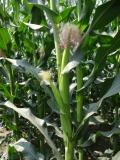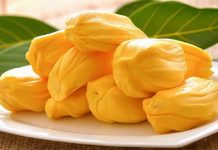Family: Poaceae
Synonym: Zea alba Mill.
Bengali/Vernacular name: Bhutta, Makai, Makka-joar.
Tribal name: Wal mum (Bawm), Makkya (Chakma), Mawccka (Chak), Metit (Khumi), Vai mim (Lushai), Ya moy ka (Murang), Mesai (Pangkhoa), Mokka-bawn (Rakhaing), Mokka (Tanchangya), Badungni makka (Tripura).
English name: Corn, Maize, Sweet corn.

Description of the Plant: A tall annual grass with large linear-oblong leaves. Female inflorescence (cobs) appear in the axils of the lower leaves, tightly enveloped by large membranous bracts. Male inflorescence in terminal panicled, spike-like racemes with 2-nate spikelets. Female spikelets 2-nate in 4-11 longitudinal rows, slightly immersed in the spongy axis of the cob.Grain large, subglobose or dorsally more or less flattened, surrounded by the dried up glumes.
Plant parts Used: Leaf, flower, seed, and root.
Traditional
Uses: Decoction of parched corn (burned or roasted) taken for the
treatment of vomiting.
Decoction made from pounded corn is taken thrice a day until the abdominal
disorder is cured.
A paste made with the corn is applied on the affected part of the body to treat
boils.
A decoction of the cob is used in the treatment of nose bleeds and menorrhagia.
Decoction of parched corn (burned or roasted) taken as tea for nausea.
A decoction of the leaves and roots is used in the treatment of strangury,
dysuria.
Parched corn was ground and boiled in sweetened milk, and then it is used to
treat diarrhea and dysentery.
Root extract for epilepsy and paste of male flower used as cure for skin
disease like wart.
Decoction of pith of cob as tea is used for stomach complaints.
Root decoction used for treatment of malaria.
Corn is used for the treatment of cold.
Distribution: This species occurs throughout the country under cultivation.
Is this plant misidentified? If yes, please tell us….














